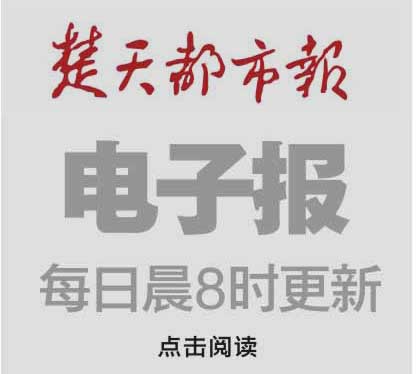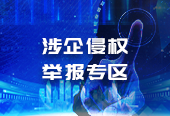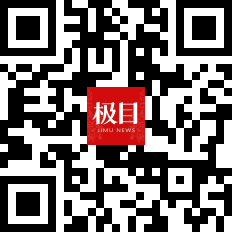膏都盐海中,驶出一艘行业巨舰
In the Sea of Salt, Yingcheng Sails Out as Salt Industry Giant
 应城盐化工产业园 通讯员 郑毅摄 Salt and Chemical Industrial Park of Yingcheng City Correspondent: Zheng Yi
应城盐化工产业园 通讯员 郑毅摄 Salt and Chemical Industrial Park of Yingcheng City Correspondent: Zheng Yi
楚天都市报极目新闻记者:陈勇
通讯员:杜朝霞 冯璇 李梦婷
翻译:崔姝娴 李周 温芷晗 (湖北大学)
Jimu News Reporter: Chen Yong
Correspondents: Du Zhaoxia, Feng Xuan, Li Mengting
Translators: Cui shuxian, Li Zhou, Wen Zhihan (Hubei University)
盐,在很多人印象里,只是一种调味料。而当你走进应城市,肯定会对盐有重新的认识。
Salt, for most people, is simply a seasoning. However, a visit to Yingcheng city, will certainly renew your understanding of salt.
民营制盐企业益盐堂的展厅里,从用途各异的调味盐,到护肤、沐浴、清洗果蔬的日用盐,琳琅满目;双环科技等绿色盐化工企业,则把盐转化成纯碱、氯化铵、复合肥等各种必需品。
In the exhibition hall of the private salt production enterprise Eontop (Yingcheng) Healthy Salt Production Co., Ltd, an array of salts were on display, ranging from seasoning salt for different purposes to salt for skin care, bathing, and cleaning fruits and vegetables. Green enterprises manufacturing salt and chemicals like Shuanghuan Science and Technology Co., Ltd. convert salt into various essential products such as soda ash, ammonium chloride and compound fertilizer.
享有“膏都盐海”美誉的应城,靠着盐打造出一个重点特色产业,成为湖北省千亿支柱产业和重点扶持特色产业集群之一。
Yingcheng, which enjoys the reputation of “the city of gypsum and the sea of salt”, has built a key characteristic salt industry and become one of Hubei's 100-billion-yuan-grade pillar industries and the key characteristic industrial clusters to support.
采膏300年后
Gypsum Mining for 300 Years
采盐业发轫
The Beginning of Salt Mining
沿211省道,经隔蒲潭大桥跨越府河,一进入应城,就能看到“膏都盐海 应来之城”八个大字。
Along the provincial highway 211, after crossing the Fuhe river via the Putan bridge, upon entering Yingcheng, one can see the words “Yingcheng, the gypsum city and salt sea, is worth a visit”.
应城的历史,和石膏、盐密不可分,全国优质石膏总储量的62%分布在应城,而“膏洞为盐洞之母,先有膏而后有盐”,应城的采盐史同样是因石膏而生。
The history of Yingcheng is closely related to gypsum and salt. A total of 62% of China's high quality gypsum reserves are located in Yingcheng. Since “gypsum is the mother of salt”, the history of salt mining in the city began with gypsum mining.
应城最早开采石膏可以追溯到明朝。应城矿山公园博物馆运营经理黄敏介绍,明嘉靖年间,大富水河水和山洪冲坍了团山西北的一个山头,半边滑落的山体显露出青白叠生的石膏。从那时起,应城开始了最早的石膏开采。这段历史,在《湖北通志》 中有明确记载。
The earliest gypsum mining in Yingcheng can be traced back to the Ming Dynasty. According to Huang Min, the operation manager of Yingcheng Mine Park Museum, during the Jiajing periods of the Ming Dynasty (1522-1566), the Dafu river and floods collapsed a hill in the northwest of Tuanshan Mountain, and half of the mountain slid down, revealing the gypsum in green and white. This marked the beginning of Yingcheng city's earliest gypsum mining. The General Annals of Hubei Province has clear records of this account.
因石膏用途广泛,需求量大。明未清初,峒商开始出现,他们投资雇人为其开洞采膏。
As gypsum was versatile in use and in great demand, by the turn of the Ming and Qing dynasties, Dong merchants began to appear and invested in hiring workers to mine gypsum.
而盐的开采利用,则要晚了许多。
The exploitation of salt, on the other hand, ensued much later.
《光绪应城志》 记载:“有盐,即凿膏废垌积卤成者;往岁,邑为淮盐引地,封禁甚严;咸丰二年太平天国军据武汉,淮盐路塞,民嗟淡食;邑西潘家集居地,潜开废垌汲熬获利。”
The Annals of Yingcheng During the Guangxu period records: “Salt was the byproduct of gypsum in the wasted Dong field. In past times, this town was the main area for salt merchants who imported and traded salt from the Huai district, when transactions of salt were strictly regulated. In the second year of the Xianfeng period (1852), the army of the Taiping Heavenly Kingdom occupied Wuhan and blocked the road used to transport salt from Huai, leaving the people no choice but to eat bland food. The Pan family, who lived in the west of town, profited from secretly mining salt in the wasted Dong field.”
清朝咸丰年以前,应城一直食用淮盐。虽然石膏开采始于明朝嘉靖年问,但膏洞峒商打井开采石膏只取白石膏,把与之共生的上下两层青石膏作为废渣,奔之洞外。废渣日积月累,渐成小丘。天下大雨,冲淋产生的盐水流到附近农田,把禾苗烧死了。
Prior to the Xianfeng period in the Qing Dynasty (1851-1861), the people of Yingcheng largely consumed Huai salt. While gypsum mining began during the Jiajing period of the Ming Dynasty, Dong merchants drilled wells only for the white gypsum. The upper and lower layers consisting of green gypsum were discarded as waste. These wastes accumulated over time and formed a small mound. When it rained heavily, the resulting mixture of rain water and salt flowed to the nearby farmlands and killed the seedlings.
咸丰二年,也就是1852年,太平军进驻武汉地区后,长江流域交通阻塞,淮盐难入湖北。膏洞附近农民用废渣浸水取汁,代替食盐,周边居民都相继效仿。1853年,应城峒商获准破禁熬盐,用废洞蓄水,汲水熬盐,取水一担,可得盐三四斤。
In the second year of Xianfeng (1852), after the army of Taiping Heavenly Kingdom occupied Wuhan, transportation in the Yangtze River basin was blocked and hence Huai salt could not be transported to Hubei province. As a result, farmers near the gypsum cave extracted salt by soaking the wastes in water and using the resulting mixture to replace Huai salt, and neighboring residents followed suit. In 1853, the government permitted Dong merchants in Yingcheng to manufacture salt. They used waste caves to store water which they would then use to boil salt. For every 50kg of water, they could obtain 1.5kg or 2kg of salt.
自采膏业300年后,盐的开采发轫,应城盐走出荆楚腹地,走向人间烟火。
Three hundred years after the inception of the gypsum mining industry, salt mining appeared, and the salt of Yingcheng city began to be exported from the hinterland of Jingchu to other territories.
晚清、民国时期是应城膏盐产业发展的鼎盛时期,矿山覆盖近半个应城地区,号称“三十里膏城”。1917年,应城纤维石膏产量达到14万余吨,占当时全国石膏产量的90%以上,生产食盐1万余吨。
During the period between the late Qing Dynasty and the age of the Republic of China (1912-1949), the gypsum and salt industries of Yingcheng reached its height of development. Nearly half of Yingcheng is covered by mines; hence it earned the title “Fifteen-kilometer Gypsum City”. In 1917, the amount of fiber gypsum produced in Yingcheng reached more than 140,000 tons, accounting for more than 90% of China's gypsum output at that time, while the production of salt was more than 10,000 tons.
靠盐吃盐 运盐车川流不息
Earning a living from salt
Salt transporters stream across the city
在应城市西北风景秀丽的团山,应城国家矿山公园就位于此处。应城膏盐开采范围以团山为中心,集中在龙王集、潘家集、团山、盛家滩一带,特别是位于应城西部要冲之地的潘家集,东西走向的古驿道横贯其境,旧称为西山矿区。
Nestled in Tuanshan in the northwest of Yingcheng, lies the Yingcheng National Mine Park. The gypsum-salt mining area in Yingcheng is centered around Tuanshan, with most sites concentrated in Longwangji, Panjiaji, Tuanshan and Shengjiatan. In particular, Panjiaji, located in the west of Yingcheng, crossed by the former east-west post road, was previously called Xishan mining area.
矿山公园里,矿洞遗址、膏盐生产工具、膏盐集镇老街、膏盐运输码头遗址、晒盐台遗址,一处处矿业遗迹,与自然景观融为一体,诉说着曾经的繁华。
In the mining park, all the relics, including mining cave ruins, salt-production tools, old streets of the salt market town, ancient salt transport docks, and salt-drying platforms, are now integrated with the natural landscape to tell of the prosperity of the past.
新中国成立后,应城盐的开采开始转向岩盐。1952年,因为石膏矿内熬出的盐质量低劣,原有盐厂全部裁撤,开采和熬盐生产停止。
After the founding of the People's Republic of China, Yingcheng turned to mining rock salt. By 1952, due to the poor quality of the salt produced from gypsum mines, all prior salt factories were closed and salt mining and production was halted.
1957年初,为探明应城的石膏储量,地质部门在距应城城区西北1000米处进行钻探,在此过程中,发现了岩盐,并探明应城的岩盐资源储量达280亿吨,其丰富储量在我国中部绝无仅有。
In early 1957, the geological department drilled 1000 meters northwest of Yingcheng in an effort to locate the gypsum reserves in the city. In the process, rock salt was discovered, and it was further discovered that Yingcheng's rock salt reserves amounted to 28 billion tons, which was unparalleled in central China.
为适应膏盐生产的需要,1960年元月,湖北省应城盐矿划分为独立的国营企业,隶属省轻工业厅管辖。
In January 1960, the Yingcheng Salt Mine in Hubei Province transformed into an independent state-owned enterprise under the jurisdiction of the Provincial Light Industry Department, so as to better meet the demands of gypsum-salt production.
从1962年开始,省、军制盐企业相继在应城建成投产。
From 1962 onwards, provincial and military salt production enterprises were successively established and put into operation in Yingcheng.
在应城土生土长的老人们印象中,那些年,城里城外运盐车辆川流不息。应城“靠盐吃盐”,先后兴建制盐厂、化肥厂、磷肥厂、化工厂等盐化企业。经过几十年的发展,应城已成为全国盐和盐化工主要生产基地之一、中南地区最大的盐业储备基地。全省10家制盐企业,应城就占6家,产能超过720万吨/年,全省近九成食用盐来自应城;高端品种盐年产量120万吨以上,居全国之首。
Local senior citizens who were born and raised in Yingcheng recall from their memory a regular stream of vehicles transporting salt throughout the area in past decades. Relying on salt, Yingcheng has built salt production plants, fertilizer plants, phosphate fertilizer plants, chemical plants and other salt and chemical enterprises. After decades of development, Yingcheng has become one of the main production bases of salt and salt derived chemicals in China and the largest salt reserve base in the central and southern regions. Of the ten salt production enterprises in Hubei province, six are situated in Yingcheng with a production capacity of more than 7.2 million tons of salt a year. Nearly 90% of the edible salt consumed in the province is from Yingcheng. The annual output of high-end varieties of salt is over 1.2 million tons, ranking first in the country.
用好资源 盐化工转型升级
Optimizing resources to transform and upgrade the salt and chemical industry
盐化工产业要可持续性发展,就必须打破对资源的依赖,打造绿色循环产业链。近年来,应城加快盐化工落后产能淘汰步伐,打造全国盐化工循环经济示范区,推进传统盐化产业“老树发新芽”。
In order to promote the sustainable development of the salt chemical industry, it is essential to break the dependence on natural resources and create a green recycling industry chain. In recent years, Yingcheng has accelerated the pace of eliminating its backwards way of production in the salt and chemical industry, and created a national demonstration zone for the salt and chemical industry by utilizing circular economy, thus driving the upgrading of the conventional salt industry.
按照“盐化为基、多元发展”的路径,应城市将全市划分为东部绿色化工发展区、南部综合种养发展区、北部特色种养发展区、中部高新技术产业区和西部农文旅养发展区,将自然资源与旅游开发高度融合,着力打造新的绿色经济增长点。
Following the strategy of “salt and chemical-based, diversified development”, Yingcheng is divided into five development zones, namely the Eastern Green Chemical Development Zone, the Southern Comprehensive Breeding Development Zone, the Northern Special Breeding Development Zone, the Central High-tech Industrial Zone, and the Western Agricultural and Cultural Tourism Development Zone. The integration of natural resources and tourism is aimed at creating new green economic growth points.
以环保倒逼转型,应城市整改了一批环保不达标企业,着力改善生态发展环境,对全市工业园及所属企业实施超低排放改造。
Environmental protection has promoted industrial transformation. The government has rectified a number of enterprises that failed to meet the environmental standards, and has focused on improving the ecological development of the environment. It is necessary for industrial parks and enterprises in the city to implement changes that facilitate ultra-low emissions.
5月16日,极目新闻记者在距应城中心城区15公里的东马坊工业园看到,这个规划面积5.04平方公里的园区,道路整洁,环境优美。
On May 16, a reporter from Jimu News visited Dongmafang Industrial Park, 15 kilometers away from the central city of Yingcheng. The park has a planning area of 5.04 square kilometers, with neat roads and a beautiful environment.
东马坊街道党工委书记王光明介绍,去年园区有规上工业企业24家,完成产值241.9亿元。同时园区新招引亿元以上项目10个,提供就业岗位700多个。截至今年一季度,园区已签约4个项目,总投资212.42亿元。
Wang Guangming, the secretary of the Party Working Committee of Dongmafang Street, introduced that last year there were 24 regular industrial enterprises in the park, with an output value of 24.19 billion yuan. At the same time, the park has attracted ten new projects of more than 100 million yuan, providing more than 700 jobs. As of the first quarter of this year, the park has signed four projects with a total investment of 21.242 billion yuan.
走进园区的应城宏宜化工科技有限公司控制室,一个庞大的屏幕上正实时显示着公司空压机的运行数据,而工作人员则在电脑屏幕前对这些运行数据进行实时监控,“生产线是全自动的,我们在这里控制就行了。”
A giant screen in the control room of Yingcheng Hongyi Chemical Technology Co., Ltd at the park displays real-time data of the company’s air compressor, while the staff monitor in front of the computer. “The production line is fully automatic, so we just need to control it here”, they introduced.
该公司办公室主任胡闻因介绍,应城宏宜化工科技有限公司成立于2014年,是一家以研发、生产、销售有机化工产品为主的企业。现在在工业园的是公司 “IGCC分布式能源碳中和应用示范暨合成氨绿色改造升级项目”,项目计划总投资20亿余元,旨在推进化工园区循环化改造,推进清洁生产技术的利用与升级,提升能源使用效率。
The company's office director Hu Wenin introduced that Yingcheng Hongyi Chemical Technology Co., Ltd., founded in 2014, is an enterprise mainly focused on research and development, production, and sales of organic chemical products. The company's “IGCC distributed energy carbon neutral application demonstration and synthetic ammonia green transformation and upgrading project” is now being carried out in the industrial park. This project, whose total investment is more than 2 billion yuan, aims to promote the recycling transformation of the chemical industry park, promote the utilization and upgrading of clean production technology, and improve energy efficiency.
据了解,这个项目采用了集成煤气化循环电力发电技术,该技术可对已有生产线升级改造,引入新能源设施,并采用碳中和技术,以实现生产过程的绿色化和减少碳排放。
It is reported that this project adopts the integrated coal gasification combined cycle as a power generation technology, which can upgrade the existing production lines, introduce new energy facilities, and adopt carbon-neutral technology in order to achieve a green production process and reduce carbon emissions.
科技赋能 老产业焕发新活力
Empowered by technology, an old industry gains new vitality
粉红色的颗粒,散发着玫瑰的清香,涂抹在身上,可祛角质、亮肤色,它的名字叫“玫瑰磨砂膏”,它是粉红色的颗粒物,散发着玫瑰花的香味
A skin care product, “Rose Scrub”, is made of pink particles with a rose fragrance, which when applied to the body aids in exfoliation and brightening skin tone.
谁能想到,这样一款在网上热卖的女性护肤品,主要原料竟是盐。走进应城益盐堂盐产品展示厅,仿佛进入一个“盐的世界”——有井盐、海盐;有孕妇吃的高钙盐,有学生吃的轻盐;有煲汤、凉拌、烧烤用的调味盐;还有到护肤、沐浴、清洗果蔬的日用盐等。
Who would have thought that the main raw material in this popular female skin care product sold online is salt? Walking into the Yiyantang exhibition hall in Yingcheng, it is as if one is entering a “world of salt”—there you find well salt, sea salt, high calcium salt for pregnant women, light salt for students, seasoning salt for soups, salads, and barbecues, salts for skin care, baths, vegetable cleaning and so on.
近年来,应城用科技创新添“盐”色,适应市场个性化需求成常态。湖北省唯一的盐产业研究院落户应城后,益盐堂公司运用其成果开发出高端品类盐,投放市场后供不应求。如今,所有盐化工企业共享这一科研平台,科技加持“盐”色精彩,古老产业正焕发出新的生机。
In recent years, Yingcheng has used scientific and technological innovation to create multiple kinds of salt, and adaptation to the individual needs of the market has become the norm. After the only salt industry research institute in Hubei settled in Yingcheng, the company uses its technological achievements to develop high-end salt, whose demand often exceeds its supply. Today, all salt chemical companies share this scientific research platform. This ancient industry is showing new vitality, empowered by technology and innovation.
在云图控股应城基地,公司行政总监谢建伟告诉极目新闻记者,自从2003年公司收购应城联碱厂以来,云图控股应城基地通过持续不断地对上下游产业链进行升级改造,累计投入70亿元以上,先后培育出应城新都化工、广盐华源、嘉施利、益盐堂与云图包装等10家规模以上企业。成功打造了〝卤-盐-碱-肥”全产业链,形成了强大而完整的产业生态系统。同时,公司还拥有湖北省盐化产业研究院、盐化工工程技术中心、盐化工博士后工作站等国内一流的技术研发平台,通过不断的技术研究和创新,推动产业升级和企业发展。
In Wintrue Holdings Co., Ltd. Yingcheng base, the company's administrative director Xie Jianwei told the Jimu News reporter that since the acquirement of the Yingcheng joint alkali plant in 2003, the Wintrue Holdings Co., Ltd. Yingcheng base has made continuous upgrading and transformation of the upstream and downstream industrial chains and has invested more than 7 billion yuan. It has successively cultivated 10 enterprises above the designated scale, such as Yingcheng Xindu Chemical Industry, Guangyan Huayuan, Jiashili, Yiyantang, and Wintrue Packaging. The enterprise has successfully built a whole industrial chain of “Halogen-salt-alkali-fertilizer”, forming a strong and complete industrial ecosystem. At the same time, the company also has many domestic first-class technology research and development platforms, such as Hubei Salt Chemical Industry Research Institute, Salt Chemical Engineering Technology Center, Salt Chemical Industry Postdoctoral Workstation, etc. And through continuous technological research and innovation, the company is promoting industrial upgrading and enterprise development.
给“一袋盐”注入新的元素,“盐海”应城踏上绿色、循环、可持续的发展新起点,逐步从低端加工向高附加值迈进,且步履行稳致远。
By injecting new elements into the salt industry, the “Salt Sea” Yingcheng has embarked on a new journey of green, circular, and sustainable development, gradually moving from low-end processing to high value-added industry with steady and long-term performance.













 鄂公安网安备 4201602000211号
鄂公安网安备 4201602000211号